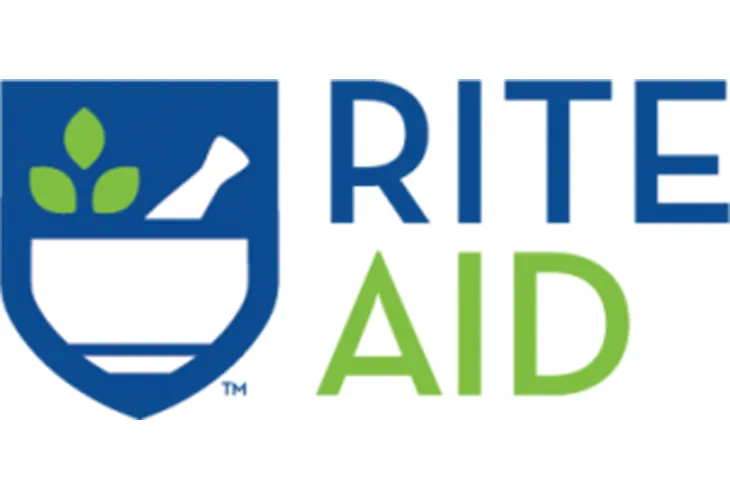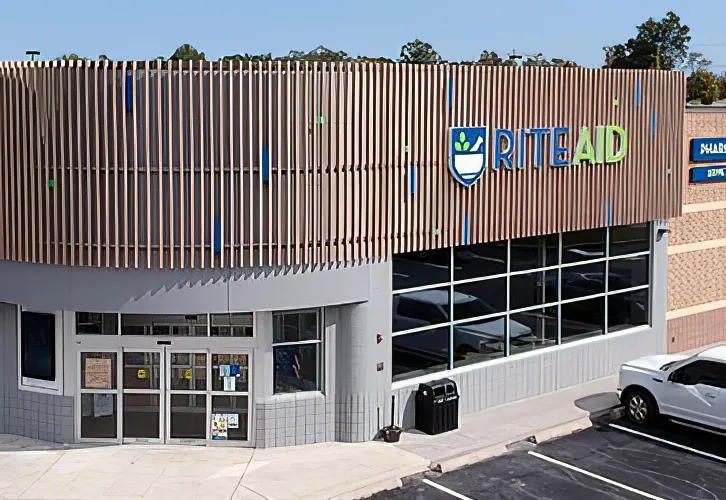PHILADELPHIA – Rite Aid had mixed second quarter results, reporting sales that beat analysts’ forecast but posting a wider than expected loss.
 The company ‘s $5.9 billion in revenue topped Wall Street’s prediction of $5.77 billion. But its adjusted 63 cents per share loss was worse than the anticipated 55 cents per share.
The company ‘s $5.9 billion in revenue topped Wall Street’s prediction of $5.77 billion. But its adjusted 63 cents per share loss was worse than the anticipated 55 cents per share.
For fiscal 2023, Rite Aid now foresees an adjusted loss of between $1.52 and $0.97 per share, wider than the previously forecast range of $1.19 to $0.66 per share. However, it maintains its projection for total revenues of between $23.6 billion and $24.0 billion.
“We’ve made good progress on key initiatives during the quarter: driving prescription growth and market share, improving operating margins at Elixir and achieving reductions in SG&A expenses across our business,” said Heyward Donigan, president and CEO. “As we look to the second half of the year, we expect continued pressure on consumer spending and supply chain challenges. At the same time, we are ready to meet a high demand for immunizations, while driving continued strong performance at Elixir and further SG&A expense reductions.”
For the quarter ended August 27, the company reported a net loss of $331.3 million, or $6.07 per share. The adjusted loss was $34.4 million, and adjusted EBITDA was $78.5 million, or 1.3% of revenues.
The $5.9 billion revenue in the period was down from $6.11 billion in the prior year’s quarter, largely due to a reduction in revenue from COVID vaccines and testing, store closures and a planned loss of covered lives at Elixir.
Second quarter net loss was $331.3 million, or $6.07 per share, compared to the year-ago net loss of $100.3 million, or $1.86 per share. The increase in net loss is due primarily to a current quarter charge of $252.2 million, or $4.62 per share, for the impairment of goodwill related to the Pharmacy Services Segment. Net loss was also impacted by higher facility exit and impairment charges driven by previously announced store closures. These items are partially offset by a gain on repurchase of certain bonds at a discount, a gain on sale of assets resulting from sale leasebacks of two distribution centers and script file sales resulting from the store closures.
Retail Pharmacy Segment revenues decreased 1.1% , hurt by a reduction in COVID vaccine and testing revenue as well as store closures, partially offset by an increase in both acute and maintenance prescriptions. Same store sales increased 5.6%, consisting of an 8.0% increase in pharmacy sales, partially offset by a 0.3% decrease in front-end sales. Front-end same store sales, excluding cigarettes and tobacco products, increased 0.2%. The number of prescriptions filled in same stores, adjusted to 30-day equivalents, increased 3.1%. Total same store prescriptions, excluding COVID immunizations, increased 2.1%, with same store maintenance prescriptions increasing 1.2 percent and other same store acute prescriptions increasing 5.3%. Prescription sales accounted for 70.7% of total drug store sales. Total store count at the end of the second quarter was 2,352.
Retail Pharmacy Segment adjusted EBITDA was $31.5 million, or 0.7% of revenues, compared to the year-ago $69.4 million, or 1.6% of revenues. The decline was due to decreased gross profit, partially offset by a decrease in selling, general and administrative (SG&A) expenses of $45.0 million. Gross profit was negatively impacted by the decline in COVID vaccinations and testing, partially offset by the increase in prescriptions filled. SG&A expenses benefited from lower payroll, occupancy, and other operating costs due to store closures and cost control initiatives.
Pharmacy Services Segment revenues were $1.7 billion, a decrease of 9.0%. The drop was primarily the result of a planned decrease in Elixir Insurance membership and a previously announced client loss due to industry consolidation, partially offset by increased utilization of higher cost drugs.
Pharmacy Services Segment adjusted EBITDA was $47.1 million, or 2.7 percent of revenues, compared to the year-ago $36.8 million, or 1.9% of revenues. The quarter benefited from increased gross profit resulting from improved network performance, increases in rebates, and reductions in SG&A expense, partially offset by the decline in revenues associated with lost clients.
For the full year, Retail Pharmacy Segment revenue is expected to be between $17.35 billion and $17.65 billion and Pharmacy Services Segment revenue is expected to be between $6.25 billion and $6.35 billion (net of any intercompany revenues to the Retail Pharmacy Segment).
The company expects a net loss for the full year of between $520.3 million and $477.3 million. Estimates for net loss have increased primarily due to goodwill impairment charges in the Pharmacy Services Segment and increased impairment charges for closed stores.
Adjusted EBITDA is expected to be between $450 million and $490 million versus prior guidance of between $460 million and $500 million, due to expectations of cautious consumer demand and continued supply chain challenges in the front end retail business, partially offset by improved margins at Elixir. Retail Pharmacy Segment adjusted EBITDA is expected to be between $305 million and $335 million and Pharmacy Services Segment adjusted EBITDA is expected to be between $145 million and $155 million.
Capital expenditures are expected to be approximately $225 million, with a focus on investments in digital capabilities, technology, prescription file purchases and distribution center automation.
Rite Aid expects to generate positive free cash flow.










